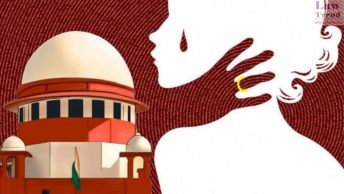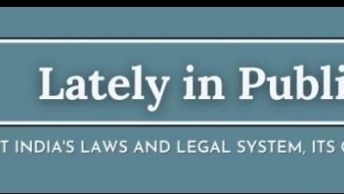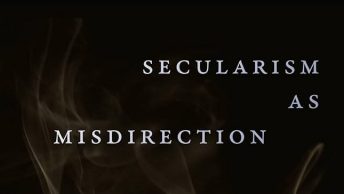Everyone knows how the Union of India had to withdraw its own affidavit in the Sethusamudram case in the Supreme Court, as the Government felt embarrassed by Paragraph 20 of the affidavit, which averred that there is no scientific basis to the claim that the Adam’s Bridge was a man-made structure, and that the epic Ramayan, which the petitioner cited in support of his claim, was just a mythology. Following the withdrawal, two of the ASI officials, who drafted the affidavit were suspended. The Government implicitly admitted that the way the two officials drafted the affidavit was contrary to the Government’s stand on the issue, though no one knows what is the Government’s stand.
Intrigued by this, I filed an application under RTI seeking to get from the Culture Ministry, a copy of the order by the Secretary, Union Culture Ministry directing an enquiry into the matter; a copy of the report submitted by the Director General, ASI, after the enquiry, and a copy of the suspension order.
The Culture Ministry, duly forwarded my application to the ASI, the competent authority. The ASI’s Central Public Information Officer (HQ) replied to me that the matter is still under investigation, hence excemption, under Section 8(1)(h) of the Right to Information Act, 2005, may apply.
I preferred an appeal against this decision, saying that the enquiry has already been completed, and the two ASI officials Chandra Shekhar and V.Bakshi had been suspended only after the enquiry. Therefore, S.8(1)(h) of the RTI Act cannot apply if the enquiry is already complete. I also said that even if the enquiry/investigation was incomplete, the information which I had sought could still be given as it would not impede the process of investigation or apprehension or prosecution of offenders.
The first appellate authority, R.S.Fonia, Director, ASI, accepted my stand that information sought by me was not covered under the Section 8(1)(h) exception of the RTI Act, and directed the CPIO(HQ) to provide the information requested by the me within seven days under intimation to him. The appellate authority’s direction was issued on December 13, 2007.
In a clear violation of the RTI Act, the CPIO (HQ) and the Culture Ministry not only failed to furnish the information to me as directed by the first appellate authority to date, but appear to contradict the appellate authority’s stand that my application was not sub-judice. In the ongoing case in the Supreme Court, the Court has not issued any direction to the Union of India not to reveal the reasons for the suspension of the ASI officials. The UOI has only sought further time to file its revised affidavit.
While the doors are open to me to approach the Central Information Commission for an appeal against the non-reply within the stipulated time by the ASI and the Culture Ministry to my application, I think it is possible to read into this non-reply the following things:
1. The Government has certainly something to hide in this, as if in its view, the suspension of these two officials was justified, then nothing prevents it from sharing the reasons for the suspension.
2. It also raises a fundamental and disconcerting question on how the Government resolves the conflict between professionalism, rooted in a secular-scientific philosophy and a standpoint born out of populism. As the suspension shows the Government sacrificing the former for the sake of the latter, the reluctance to share with the public the reasons for the officials’ suspension is quite obvious.





